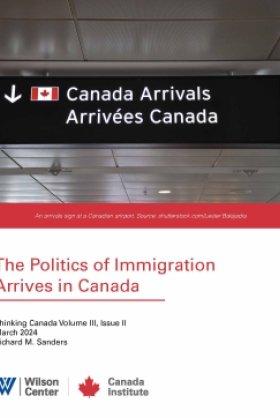New Scholarship in Race and Ethnicity <br>Assimilation of Second-Generation Korean Americans: Education, Work, Identity, and Intermarriage
Overview
The immigrants who arrived in the United States in the second half of the 20th century, unlike their forerunners in the first half of the century, were largely non-white and faced a shrinking industrial economy. Some immigration scholars have postulated that American racism, as well as the altered economic opportunities, will have a negative affect on the upward mobility and assimilation of the later arrivals. In the thirteenth program of the Division of U.S. Studies' series on New Scholarship and Race, however, Prof. Dae Young Kim drew on his research with second-generation Korean immigrants to argue that their assimilation experience has largely been successful.
According to the 2000 census, 61 percent of U.S.-born Korean-Americans are college graduates. The figure for U.S.-born whites is 29 percent. The percentage of U.S.-born Korean immigrants in professional occupations is 32.9, compared to 19.9 percent for U.S.-born whites. Struck by those numbers, Prof. Kim conducted telephone interviews with 200 second-generation Korean-Americans, ages 23-35, in the New York/New Jersey metropolitan area, and then held in-person in-depth interviews with 40. He concluded that the second-generation's success rate has been primarily the result of the strategy of the first-generation immigrants, who placed a strong emphasis on their children's education and used entrepreneurship, such as "mom and pop" businesses, as stepping stones for overcoming barriers presented by racism and poverty.
Nonetheless, the occupational choices of the second generation have not been precisely in keeping with the expectations of the first generation. The common advice of Korean parents to their children was to get into the top universities and become doctors, lawyers or engineers. Instead, the second-generation has chosen to enter a wide-range of professional careers, which includes medicine but also ranges from investment banking to fashion design. The second-generation's professional choices, Kim added, have been guided by an emphasis on job satisfaction as much as by a concern for wealth and status. He found second-generation Korean-Americans to be increasingly interested in the prospect of self-employment, but instead of the small retail stores begun by their parents, they speak about beginning small upscale businesses such as independent contracting firms or high-end nail salons. Neither generation is interested in the second generation taking over the labor-intensive, small businesses begun by the first.
Commentators Mary Waters and Steven J. Gold described Prof. Kim's study as offering groundbreaking insights into the modern immigration experience, particularly as it involves self-employment. Calling the Korean trajectory a "real American success story," Prof. Waters noted that unlike other immigrant groups, well-educated Koreans chose to leave professional careers in their home country in order to provide greater economic opportunities for their children in the United States. Their story, added Prof. Gold, is an example of how skilled migrants with social capital can successfully negotiate the changing U.S. economy. By taking advantage of the opportunities presented as a result of "white flight" from American cities and the reduced institutional discrimination that began in the 1960s, Korean immigrants have achieved in one generation what other immigrant groups took two to three generations to achieve – or, as Prof. Waters commented, Korean-Americans have managed the transition from "immigrant" jobs to "American" jobs in one generation. Gold cautioned, however, that later generations may face challenges such as segmented assimilation, when strong ethnic ties give way to some of the negative influences of acculturation into mainstream society.
Prof. Waters also suggested areas that merit additional study. How, for example, do gender dynamics affect integration and upward mobility? What is the impact of the second generation's upward mobility and job choices on the emotional relations between members of the two generations, given the first generation's high educational background but limited mobility? How has upward mobility affected the very meaning of what it means to be Asian American? Will Asian Americans come to experience a racial glass ceiling? Clearly, there is a great deal of research to be done about Korean-Americans now and in the years to come.
This event was co-sponsored and made possible by the Maurice Falk Fund.
Drafted by Acacia Reed
Philippa Strum, Director, Division of U.S. Studies 202-691-4129
Hosted By

Indo-Pacific Program
The Indo-Pacific Program promotes policy debate and intellectual discussions on US interests in the Asia-Pacific as well as political, economic, security, and social issues relating to the world’s most populous and economically dynamic region. Read more
Thank you for your interest in this event. Please send any feedback or questions to our Events staff.










